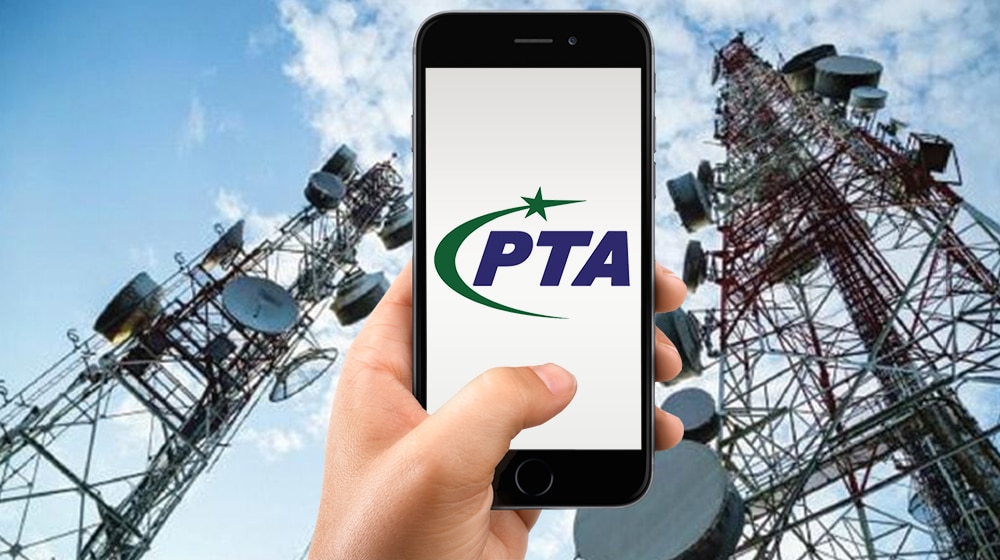Pakistan Telecommunication Authority (PTA) has decided to review the existing and format new Key Performance Indicators (KPIs) in fixed broadband quality of service (QoS) regulation while saying that due to the growing number of subscribers, the quality of broadband services is of concern.
The Broadband (i.e., Fixed Line) Quality of Service (QoS) Key Performance Indicators (KPIs) have been outlined in Broadband Quality of Service Regulations 2014, the gazette notified in August 2014 referred to as “BB QoS Regulations 2014.”
Due to the growing number of subscribers, the quality of broadband services is of concern to PTA. As per PTA’s vision of “Protecting Consumer Interest and ensuring high-quality ICT Services,” these indicators are created to establish quantifiable and measurable standard parameters, which the service provider is entailed to provide, and the user has a right to expect thus invariably enhancing consumer satisfaction.
The “Broadband” service, as defined in BB QoS Regulations 2014, is an “always-on” service with a data rate equal to or greater than 256 Kbps or as adopted by the Authority from time to time. Similarly, in line with the goals envisioned in Telecom Policy 2015, which emphasizes the widespread availability of affordable broadband services, provided over fixed or mobile networks with characteristics that support contemporary and new digital applications and content.
According to section 9.3 of the said policy, PTA is required to monitor the broadband quality of service provided by the service providers according to its key performance indicators, including committed bandwidth and outage commitments with the customer.
With the technological development and the introduction of G.fast Technology, the theoretical speed has been enhanced to 1000 Mbps (max), along with the promulgation of WiFi-6 /802.11ax protocol/standard, where the data rates of 10 Gbps (dense IoT Deployment) has been attained, the definition of minimum downlink speed for term “Broadband” needs to amended from 256 Kbps to 4 Mbps.
Also, the used cases of Fixed Wireless Access (FWA) broadband in 5G telecommunication technology are ultimately considered as a substitute for wireline connection in the last mile, enabling the transfer of high-speed data between two points.
Moreover, by 2025, Pakistan also aims to connect 75 percent of Metropolis, districts, town, tehsil, and union council with Optical Fiber Cable based fixed/wireless access network with an average user data throughput of 50Mbps in its Major cities.
The broadband fixed internet services have been revolutionized with the introduction of GPON technology, enabling the provision of ultra-high-speed internet services to the consumers.
To ensure a level playing field along with a competitive environment and subscriber satisfaction, performance measurement with a common standard regarding QoS is a must. Customers’ opinions should also be taken into consideration in this regard. With the advancement in technology and the introduction of bandwidth-hungry applications, it is about time to set some benchmarks/thresholds for Broadband Service Providers (BSPs), which they must comply with to ensure consumers’ satisfaction.
The Broadband Quality of Service (QoS) Regulations, 2014, has a scope and applicability to all fixed broadband services to identify the minimum quality of service standards and associated measurement. However, with the advancement in Broadband Technologies, migration from the legacy network onto modern GPON/FTTH technologies, some of the KPIs included in the BB Regulations 2014 may not be applicable and needs to be reviewed/amended per the international practices.
Network Availability (>=99.9 percent):-It is the measure of the degree to which the network (Access and Core network) is operable and not in a state of failure or outage at any point in time. It measures the total downtime of the network, including the ATM switches, multiplexers, routers, e-mail facilities (if provided), and connection to the Internet backbone over a month.
All scheduled downtime for maintenance and upgrading of the network system will be excluded from the calculation. However, all access network operators must keep their users informed of such maintenance times. The reported downtime should include any downtime caused by upstream service providers.
The KPI is proposed to be renamed as “Service Up Time Success Rate” and is redefined as “Service Up Time Success Rate (>98 percent).” It is the measure to ascertain the broadband service up-time to the end-users in case of planned or the unplanned start of the device.
During the testing period, if N attempts are made to connect to the internet and if the attempt failed F times then: Service Up Time Success Rate = (1-F/N) x 100 percent.
An attempt is declared as a failure if an internet connection is not established within time as per the following classification of services:
- Terrestrial FLL Services (xDSL, FTTx, DOCSISx, etc.): 60 Seconds
- Satellite FLL Services: 120 Seconds
The KPI is proposed to be renamed as “Download Data Throughput” and shall be defined as follows:
Download Data Throughput (Kbps/Mbps): The download data throughput is defined as the data transmission rate that is achieved for downloading specified test files between a remote website and a user’s computer to check the actual download speed available to the subscriber.
Keeping the reasonable loading level in the intra network links up to ISP node, and the fact that in general for normal broadband operations data rate is lower than the advertised/planned data rate, the data speed must be at least 80 percent or above of the advertised speed of broadband service plan, and this must be experienced at all the time.
Download Data Throughput = Size of the test file (in MB)/Transmission Time (in seconds) required for error-free transfer of the entire data.
The size of the test file should be at least 5GB in size. It should be downloaded from the website (using either HTTP or FTP protocol) of the BSP and/or PTA’s website and /or from http://speedtest.tele2.net/ or any site decided by the Authority, as long as the choice is consistent for all. For other download packages, the file size shall be adjusted accordingly to maintain the same anticipated download time.
It is proposed to rename the KPI to “Upload Data Throughput (Kbps/Mbps),” and to be defined as “The Upload Data Throughput is defined as the data transmission rate that is achieved for uploading the specified test files between a user’s computer to a remote web site or to check the actual upload speed available to the subscriber.” The methodology used for calculating upload speeds shall be similar to download speeds.
The Upload Data Throughput must be at least 50 percent of Download Data Throughput and must be experienced all the time. (e.g., If a package has a Download Data Throughput of 10 Mbps, and the test is conducted for 100 minutes, the Average Upload Data throughput must be 5 Mbps for 100 minutes.
Upload Data Throughput = Size of the test file (in MB)/Transmission Time (in seconds) required for error-free transfer of the entire data.
New Key Performance Indicators (KPIs)
Webpage Loading Time: Webpage Loading Time is assumed to have a direct influence on customer satisfaction with the service provided by the network and its operator. The time required for loading a website is known as Webpage Loading Time. Measured by loading a standard reference page and recording the amount of time that this page takes to load. The benchmark will be <= 3 Seconds.
Voice over Internet Protocol (VoIP)
VoIP is a method and group of technologies for the delivery of voice communications and multimedia sessions over Internet Protocol (IP) networks, such as the Internet. It is a technology that allows making voice calls using a broadband Internet connection instead of a regular (or analog) phone line.
The time between sending of complete call initiation information by the caller (A-Party) and in return receipt of call setup notification.
- VoIP Call Setup Time = t2 –t1
- Where t2 is ringing time and t1 is invite time
- The benchmark will be < 7.5 Sec.
Net Neutrality The “core principles” of net neutrality must be followed by all licensed BSPs across the country. The BSP shall not be involved in unlawful Blocking of applications, websites, or any other content on the Internet by Slowing or “throttling” Internet speeds. Network providers shall transport all services on an equal basis regardless of their types.
Telecom development of the Internet is the NGN. Traffic management mechanisms shall be used by ISPs to optimize the flow of traffic within their networks. Special measures shall be taken to overcome the traffic congestion which may be met in IP networks when traffic increases to a level at which routers run out of buffer space and are forced to start dropping some IP packets, which typically occurs, randomly.





















